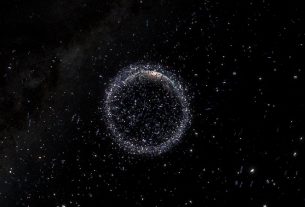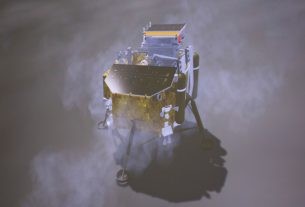Seven years ago, SpaceX launched its first interplanetary mission to deliver a large climate observatory more than a million kilometers from Earth. However, the second stage of the Falcon 9 rocket used during this mission must soon cross the orbit of the Moon. According to a researcher, an impact could take place in March.
After several postponements, the Deep Space Climate Observatory (DSCOVR) was finally launched on February 11, 2015 by a Falcon 9 rocket from Florida. Its objective was to place the satellite on a trajectory leading it towards the Lagrange point L1 of the Sun-Earth system, more than a million and a half kilometers away. On June 8, more than 120 days after its launch, it was successfully placed in orbit.
That said, on interplanetary missions, the upper stage of a rocket is typically sent into a heliocentric orbit, keeping it away from Earth and its Moon. Here, after completing its long burn, the second stage of the Falcon 9 rocket this time did not have enough fuel left to be redirected back into Earth’s atmosphere before burning up. It also lacked the energy to escape the gravity of the Earth-Moon system. Thus, for about seven years, the structure has been evolving in a somewhat chaotic orbit. However, his journey should soon be over.
An impact in March
According to Bill Gray, a specialist in near-Earth objects, the orbit of this stage is about to cross that of our satellite. Such an impact could occur on March 4, probably on the far side of the Moon at the equator. The dry mass of the Falcon 9 second stage is approximately four metric tons. According to the specialist, it should impact the Moon at a speed of about 2.58 km/s.
Some uncertainties remain. It is indeed difficult to accurately predict the effects of sunlight on the orbit of this stage. These unpredictable effects are very small, but they will accumulate by March 4. Thus, other observations will be necessary to refine the precise time and place of the impact.
This data will be important. Indeed, they will allow satellites currently orbiting the Moon, including NASA’s Lunar Reconnaissance Orbiter, to collect valuable data on the impact crater. It wouldn’t be a first. In 2009, NASA deliberately sent the Centaur upper stage of an Atlas V rocket to crash on the Moon as part of the LCROSS mission, which also aimed to place the LRO probe in lunar orbit.




